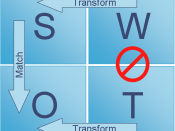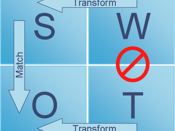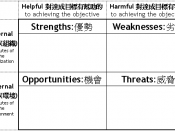The goal of this SWOT analysis is to help BMW Group to identify its critical strategic factors and then build on vital strengths, correct glaring weaknesses, exploit significant opportunities, and avoid disaster-laden threats (Slocum et al, 1994). However, despite its wide and enduring popularity, SWOT has remained a theoretical framework, of limited prescriptive power for practice (Novicevic et al, 2004). Both practitioners and researchers have been disappointed because although SWOT generates interesting questions, it provides little guidance to managers. Recent empirical work suggests that successful marketing strategies emerge from a comprehensive situation audit (Menon et al., 1999). On the one hand, the audit includes a planning input to a systematic evaluation of both external (opportunities and threats) and internal (firm strengths and weaknesses) environments. On the other hand, the information about competitors and customers (e.g. market intelligence) needs to be collected to assist senior managers in making resource commitments, which are intended to provide options for the firm to exercise in order to maximize the fit between its capabilities and future opportunities (Day and Nedungadi, 1994).
Subsequent it is reasonable to forward the analysis with the 3Cs framework. The idea is to go for a segment of the market where, by virtue of BMW Groups distinctive strengths, it is able to satisfy customer needs better than (or at least as well as) its competitors. This necessitates a thorough understanding of the strengths, weaknesses, opportunities, and threats profile (SWOT) facing the firm- something which can only be achieved by a dedicated internal (company), competitor, and customer/market analysis (Brooksbank, 1994


